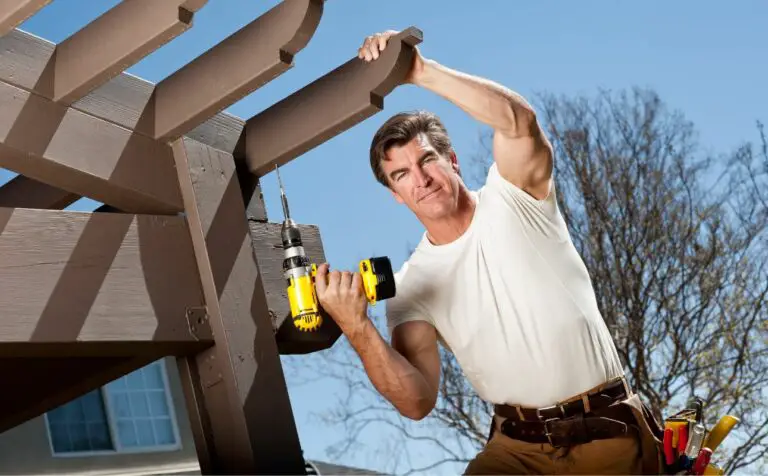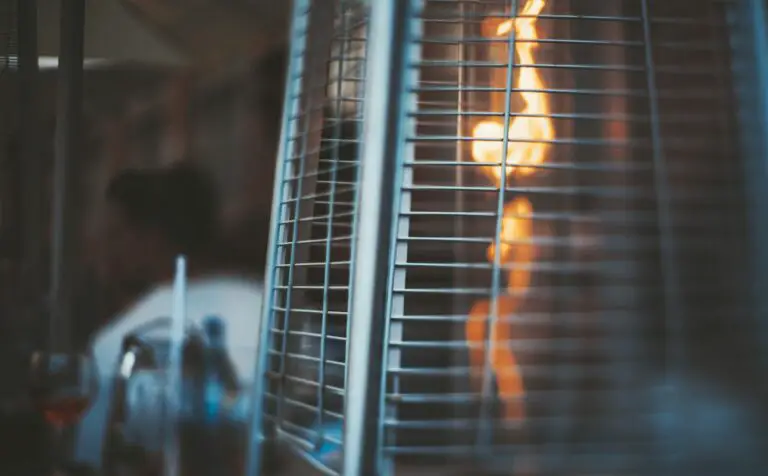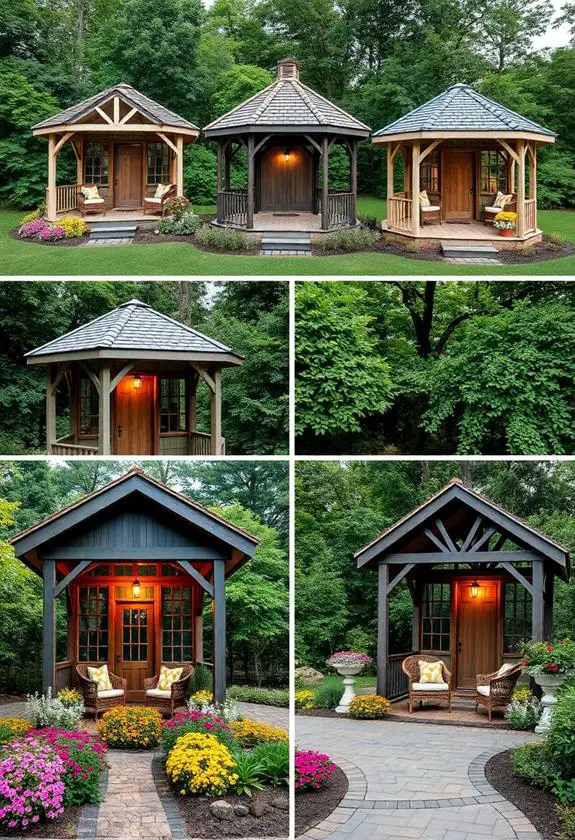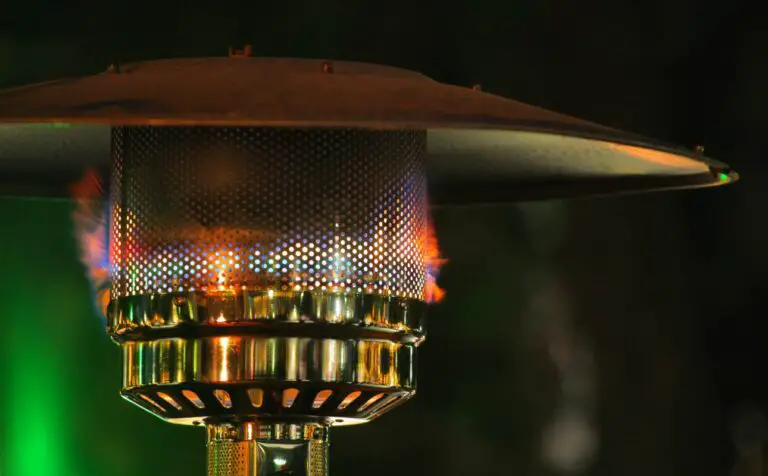As the colder months draw near, you’re likely wondering how to keep your outdoor living space warm and inviting. One option is to utilize a patio heater, but you might be concerned about whether it’s safe to use under a covered patio. Don’t worry, this article will help you navigate the world of patio heaters and determine the best way to use them safely and effectively in your outdoor space.
Patio heaters come in a variety of types and designs, and yes, many of them can be used under a covered patio. However, it’s essential to consider the specific heater model and its safety features to ensure that you are choosing one compatible with your covered patio’s dimensions and layout. To guarantee proper usage, always check the clearance requirements and ensure there are no open flames present in the design of the patio heater.
With these precautions in mind, you’ll be able to enjoy the warmth and comfort provided by a patio heater even in your covered outdoor area. So, go ahead and transform your chilly outdoor space into a cozy retreat that you and your loved ones can appreciate all year round.
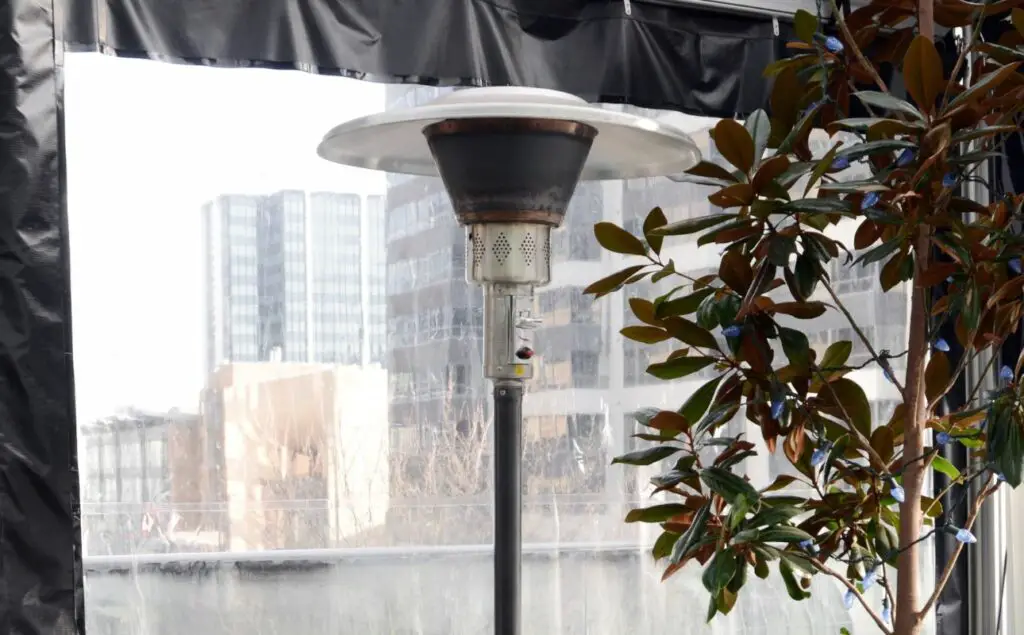
Safety Considerations
When using a patio heater under a covered patio, there are several safety aspects to keep in mind. Considering these factors will help make your outdoor space warm, cozy, and most importantly, safe for everyone.
Clearance Requirements
Always check the manufacturer’s guidelines for proper clearance distances around your patio heater. Ensure that there is enough space between the heater and any nearby objects to prevent accidental contact and potential fire hazards. Maintain a safe distance from walls, furniture, and other combustible materials to reduce the risk of accidents.
Ventilation
Adequate ventilation is crucial when using a patio heater under a covered patio. Ensure there is enough airflow around the heater to allow heat and any combustion byproducts, such as carbon monoxide, to dissipate safely. Enclosed spaces with limited airflow can lead to dangerous situations, so keep your outdoor area as open as possible.
Combustible Materials
Be mindful of combustible materials in the vicinity of your patio heater. Items like fabric, wood, and paper can easily catch fire if they come into direct contact with the heat source. Store any flammable items away from the heater and consider using fireproof or fire-resistant materials in your outdoor space for added safety.
Open Flames
Whether your patio heater uses propane, natural gas, or electricity, it’s essential to be cautious with open flames. Always light your heater according to the manufacturer’s instructions, and keep a fire extinguisher nearby for emergencies. Never leave your heater unattended, and turn it off when not in use.
Gas Leak Precautions
For patio heaters that use propane or natural gas, it’s essential to follow proper gas leak precautions. Regularly inspect your heater’s gas connections and hoses for signs of wear, and replace them as needed. If you suspect a gas leak, shut off the heater immediately, leave the area, and call a professional for assistance.
By taking these safety measures into account, you can comfortably host gatherings and enjoy cozy evenings on your covered patio, while ensuring everyone’s safety.
Installation and Positioning
When installing a patio heater under a covered patio, it’s crucial to consider several factors to ensure both warmth and safety. In this section, we’ll discuss angle adjustment, ceiling height requirements, and safe distances.
Angle Adjustment
To maximize the heat distribution and effectiveness of your patio heater, you may need to adjust the angle of the heat source. This allows you to direct the warmth towards specific areas of your covered patio, ensuring everyone stays cozy and comfortable. Remember to follow the manufacturer’s guidelines for your particular heater when making angle adjustments, and always err on the side of caution when it comes to safety precautions.
Ceiling Height Requirements
The height of your covered patio’s ceiling plays a significant role in the safe installation and use of a patio heater. Most heaters require a minimum ceiling height to avoid fire hazards and damage to your patio’s structure. Make sure to check the manufacturer’s recommendations for ceiling height and adhere to them. If your ceiling is too low for a particular heater, consider alternative solutions such as wall-mounted or hanging heaters, which might be more suitable for your location.
Safe Distances
Maintaining safe distances between your patio heater and other objects, such as propane tanks, umbrellas, and furniture, is essential for safety and proper functioning. Each heater will have specific guidelines regarding the required distance from combustible materials and other objects. Make sure to follow these guidelines, as they prevent potential hazards like fires, and ensure that you and your guests enjoy a pleasant experience on your covered patio.
In conclusion, proper installation and positioning are crucial for getting the most out of a patio heater under a covered patio. Always consider angle adjustments, ceiling height requirements, and safe distances when setting up your heater. Happy heating!
Where Can I Place My Heater on My Covered Patio?
When deciding where to place a patio heater in your covered patio, safety should be your top priority. To begin, make sure you choose the right type of patio heater for your outdoor space. Some heaters are designed specifically for use in covered areas, while others may not be safe for this purpose. Keep in mind that patio heaters are not waterproof, so select a model suited for your specific patio setup.
When placing your heater, it is essential to provide ample space around it to reduce the risk of fire. It is generally recommended to leave at least a few feet of empty space surrounding the heater. Be sure to check the manufacturer’s instructions for the proper safety guidelines related to your specific heater model. For propane heaters, do not place the heater or propane tank near any wooden beams to prevent fire hazards.
Also, consider the size and format of your covered patio when positioning your patio heater. The size of your outdoor space will determine what type of patio heater is ideal, how many heaters you’ll need, and where you can place them. Arrange the heater so that it optimally distributes warmth in the seating area without causing any unsafe conditions.
Lastly, remember to maintain your patio heater regularly to ensure its safe and effective operation. For propane heaters, propane tanks have a limited lifespan, so replace them before they expire. For natural gas and electric models, regularly inspect the gas line and power cords for any damage.
By following these guidelines and keeping a friendly, safety-first mindset, you’ll be able to enjoy the warmth and ambiance of your patio heater in your covered patio space throughout the year.
How to Use an Outdoor Heater Under a Covered Patio?
When using an outdoor heater under a covered patio, it’s essential to keep a few key considerations in mind to ensure safety and efficiency. By following these tips, you will be able to enjoy your cozy outdoor space all year round.
First, it’s crucial to choose the right type of heater for your covered patio. Both electric and gas heaters can be used, but each has its advantages and disadvantages. Electric heaters are generally safer and don’t produce harmful emissions, making them an excellent option for poorly ventilated spaces. Gas heaters, on the other hand, can provide more powerful heating and are generally more budget-friendly. Keep in mind that if your patio is poorly ventilated, indoor electric heaters will be your best bet.
Next, pay attention to the clearance requirements for your specific heater model. Clearance is the minimum distance required between the heater and combustible materials, such as the patio roof or walls. Make sure to follow the manufacturer’s recommendations for safe clearances, as the further away your patio heater is from the roof or other combustible materials, the better off you will be.
You should also ensure that your outdoor heater has an enclosed design, which means no open flames. If you’re using a patio heater under a gazebo or another type of covered patio, the best outdoor heater is one that doesn’t have open flames.
Lastly, make sure you properly maintain and store your patio heater when it’s not in use. Regularly check for any signs of wear and tear, clean the heater according to the manufacturer’s instructions, and be mindful of the storage guidelines for your specific model.
By taking these precautions and selecting the right heater for your unique circumstances, you can safely and effectively use an outdoor heater under your covered patio. Enjoy the warmth and added comfort as you extend your outdoor living space into the cooler seasons.
Frequently Asked Questions
How much clearance is needed above a patio heater?
When using a patio heater under a covered patio, it’s important to ensure proper clearance to avoid fire hazards. A minimum of 2 feet of clearance between the patio heater and the roof is recommended. Keep in mind that this may vary depending on the type and model of your patio heater, so always consult the user manual for specific guidelines.
Is it safe to place a heater under a canopy?
Yes, it’s generally safe to place a patio heater under a canopy if the heater features an enclosed design. This means that it should not have open flames to minimize the risk of accidents. Additionally, heaters that use infrared heat technology are typically considered safer as they distribute heat without open flames.
What are the ideal distances from a patio heater to the house?
The recommended distance between a patio heater and any nearby structures, including your house, will depend on the heater’s type and design. Always follow the manufacturer’s guidelines, which can typically be found in the user manual. Generally, a distance of at least 3 feet is advised to ensure both safety and effective heat distribution.
What is the best method to heat a covered outdoor patio?
There are several methods to heat a covered outdoor patio; however, infrared patio heaters that use electric or propane energy sources are often considered the best option. These types of heaters do not have open flames and provide efficient heat distribution while minimizing safety concerns.
Are propane patio heaters suitable for covered patios?
Yes, propane patio heaters can be suitable for a covered patio as long as they are designed for safe use in such spaces. To ensure safety, opt for models with no open flames and features like tip-over protection, flame control systems, and safety shut-off valves. Always follow the manufacturer’s guidelines and pay attention to clearance requirements, as mentioned in the user manual.
